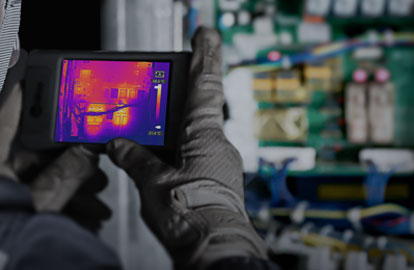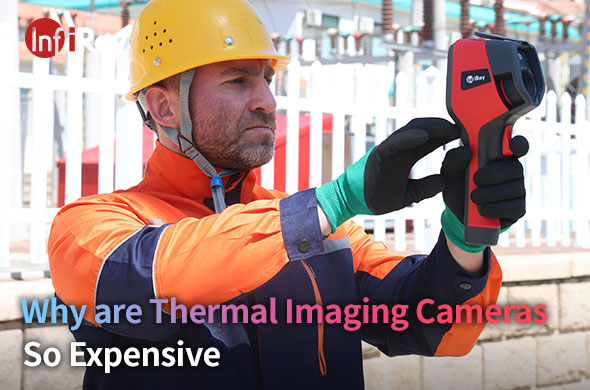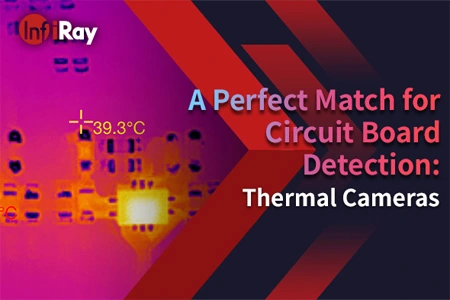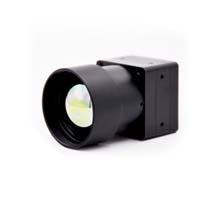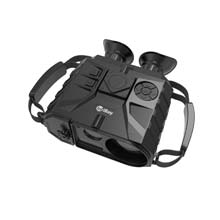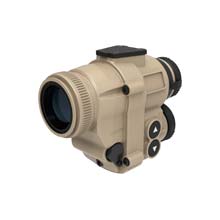Application of Thermal Cameras in the Steel Industry, to Discover Pipe Exceptions of Hot-Blast Stoves within 1 Second
The hot-blast stove is an essential device for furnace smelting and production in iron mills. The hot air pipe connects the furnace and the hot-blast stove, and therefore the interior refractory materials of the hot air pipe may be softened and have a reduced strength due to long-time high-temperature hot air erosion. The pipeline becomes thinner and falls off, and pipeline ruptures and high-temperature air outflow may even occur, causing threats to the life safety of work personnel. Online monitoring can be implemented for the pipeline temperature of the hot-blast stove by using thermal cameras. This is not only related to the safety and early-warning capability of risks for the ironmaking process in furnaces but also matters to the life safety of ironworkers.
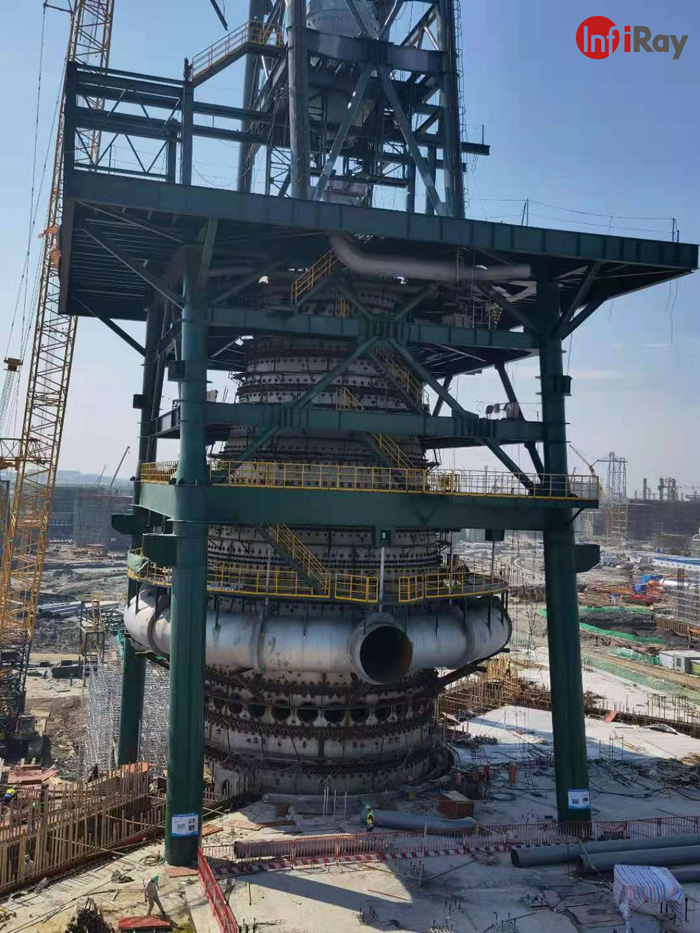
I. Problems of the Existing Solution
Generally, one furnace is equipped with 3 to 4 hot-blast stoves. One hot-blast stove is for air supply, and the other two or three are for heating. The hot-blast stove take turns to supply air and provide heating. The purpose of hot-blast stoves is to provide hot air into the furnace. The cold air pipe and hot air pipe are connected to the hot-blast stove. An air blower blows massive air into the hot-blast stove, and the gas generated in the ironmaking process in the furnace is transported to the hot-blast stove for burning. The heated air is then blown into the furnace through the hot air pipe. The temperature in the stove can reach 1,350°C. However, due to the firebricks, the pipeline wall is within 200°C.
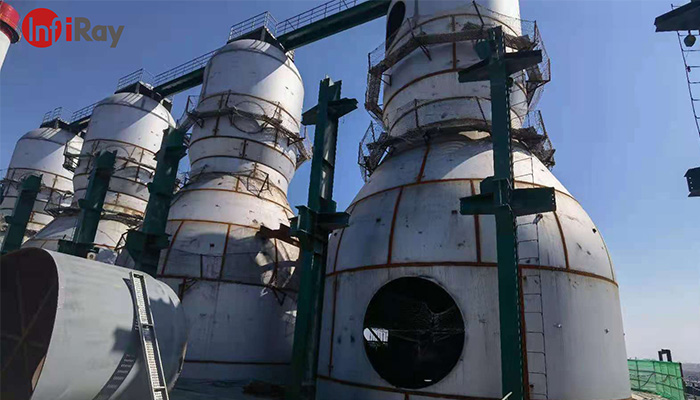
In traditional temperature monitoring solutions for hot-blast stove pipelines, multiple thermocouple sensors are installed on the exterior surface of the hot-blast stove pipelines, and the sensors measure the temperature on a specific point of the pipeline by touching the pipeline. In such solutions, the thermocouple is used for monitoring and is prone to damage, and it is difficult to replace thermocouples, causing great waste of manufacturing cost and manpower resources.
II. Application Examples
An iron and steel plant in Jiangsu wants to install thermal cameras for temperature monitoring for the pipes of hot-blast stoves. The specific requirements are as follows:
1. Temperature measuring range of -20°C to 550°C; high measurement accuracy of ±2°C
2. High resolution of 640×512
3. Three furnaces are installed, and each furnace is equipped with four hot-blast stoves. For each stove, 3 thermal cameras are required to cover the entire connection between the hot air outlet and the main pipe for hot air, to achieve online and real-time monitoring of the temperature on the key area of the entire pipeline surface.
4. Electric focusing should be supported.
5. The 485 control PTZ should be supported, with functions of setting presets, calling presets, and patrol.
6. Flameproof enclosures are required due to the harsh environment.
7. Alarm linkage should be supported. When the temperature in the area monitored by the thermal camera exceeds 200°C, the alarm information is sent to the central health diagnosis system to remind the staff for the onsite check.
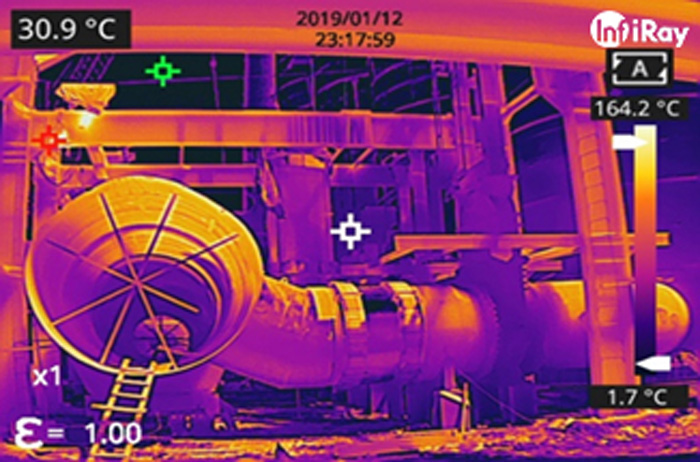
iRay fully considers the customer's need and onsite actual situation and deploys two thermal cameras on the two sides of the hot air pipe. The thermal cameras support PTZ control. With the PTZ, users can implement functions such as presets and patrol, to monitor the temperature of key areas. With the InfiRay IRS-VMS system networking software, video preview, alarm configurations, and temperature measurement curve data and report generation can be realized. In addition, functions such as alarm linkage prompt preview, image capturing, and video recording can be implemented to satisfy customers' needs.
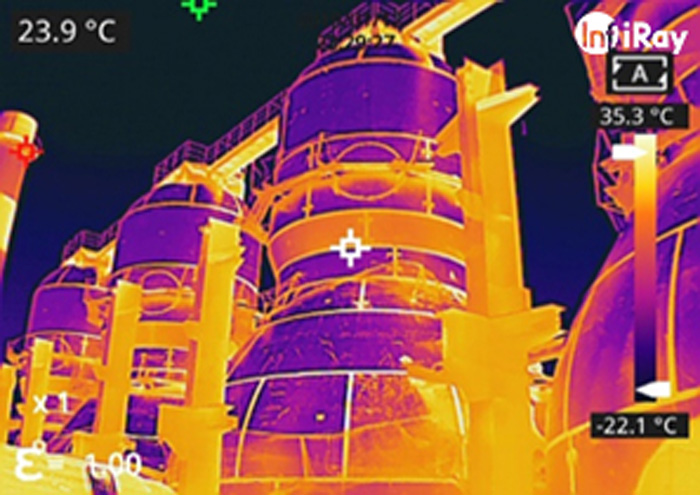
III. Advantages of the InfiRay Thermal Camera Solution
1. Non-contact real-time online temperature measurement: The solution does not affect the objects to be measured and measures all temperature points of the image. The hottest point on the entire screen or the area is automatically captured for users to directly see the problem and efficiently locate problems without omission.
2. Wide measurement range: -20°C to 550°C; 0 to 1,500°C (optional)
3. Self-defined alarm threshold: When the temperature exceeds the configured alarm threshold, linkage prompt preview, image capturing, and video recording can be initiated.
4. Generation of the temperature curve The temperature data curve can be used to analyze the hot-blast stove pipeline temperature trend and determine whether refractory materials fall off accordingly.
5. Infrared image videos of the entire process in each set of hot-blast stoves and furnaces can be recorded and stored to hard drive video recorders or local servers. The IRT-VMS networking software can be used for unified management and configuration for all accessed devices.
As the leading manufacturer of uncooled IRFPA, InfiiRay will leverage its cutting-edge technology and mass production capabilities to present its infrared camera series with a smaller size, lower power consumption, higher performance, and lower cost, as well as professional infrared thermal imaging solutions, thus overall boosting the application of infrared thermal imaging technology in more areas and empowering various industries.

 français
français  Deutsch
Deutsch  Español
Español  italiano
italiano  русский
русский  português
português  العربية
العربية  日本語
日本語  한국어
한국어  magyar
magyar 





